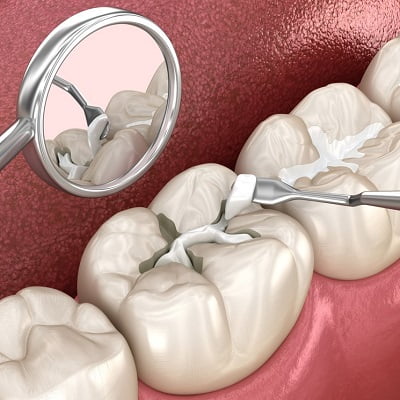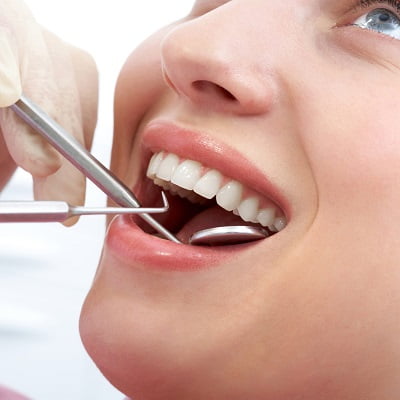
Do you have a dental filling that hasn’t bothered you for a long time but has now started to hurt? Do you fear paying the dentist because you are unsure whether your filling even requires replacement? Many of our patients regularly worry about this. It’s critical to be aware of any changes in the way your teeth feel or appear in order to spot an issue with a filling. It’s critical to get in touch with your dentist right away if you experience any changes in the color of your teeth, increased sensitivity to hot or cold temperatures, or pain when biting down. Your dentist will inspect each of your fillings as part of your routine dental exams. Keep reading on to learn how do you know if tooth filling is wrong?
What is a Dental Filling?
To restore a tooth that has been harmed by decay, cracking or other causes, a dental filling is a restorative dental procedure. The tooth’s decayed or damaged area is removed by the dentist during the procedure, and the cavity is then filled with filling material like composite resin, silver amalgam, or gold. The filling material is then polished and shaped to match the tooth’s natural appearance.
A dental filling is intended to repair the tooth’s strength, functionality, and appearance. A dental filling can assist in maintaining the overall health of the tooth and the tissues surrounding it by enclosing the cavity and halting further harm or decay. Dental fillings are a popular and efficient treatment option that can frequently be finished in just one visit. To monitor the condition of your fillings and to take immediate action if any problems do arise, it is crucial to practice good oral hygiene and to schedule routine dental exams.
How do you know if tooth filling is wrong?
There are several indications that a tooth filling might be flawed or failing, including:
Pain or sensitivity:
A tooth with a filling that is too high or irritates the surrounding tissue may experience pain or sensitivity. A person may feel pain or sensitivity when they bite down, or the area may be sensitive to hot or cold temperatures. In some cases, a person may experience pain in their tooth for no apparent reason. The tooth may also become painful after eating sugary or acidic foods.
Damage or decay:
A compromised or deteriorated filling may allow bacteria to enter the tooth, resulting in additional decay or damage. This can lead to further pain, as the bacteria erodes or affects the internal structures of the tooth.
Cracks or chips:
Additionally, a crack or chip in the tooth may be the source of pain. A filling may become cracked or chipped over time, particularly if the tooth has been subjected to a lot of chewing or grinding. As a result, an examination and X-ray may be required to diagnose and confirm the cause of pain.
Lose or missing filling:
Filling that is loose or missing should be repaired right away because it could cause additional decay or damage. When a filling is loose or missing, the underlying tooth structure may be exposed to bacteria and food particles. To prevent further damage, it is important to repair the loose or missing filling as soon as possible.
Poor fit:
An improperly fitting filling may cause pain, discomfort, or even more damage. When a filling does not fit properly, food particles and bacteria may become lodged in the small spaces between the tooth and the filling, leading to additional decay. If a filling does not fit properly, it is important to seek dental treatment as soon as possible
Book Your Consultation:
Make an appointment with your dentist as soon as you think there might be a problem with your tooth filling so that it can be checked out and fixed. Future dental issues that are more serious and expensive can be avoided with early intervention. Call SKN Cosmetics Islamabad for further details.



